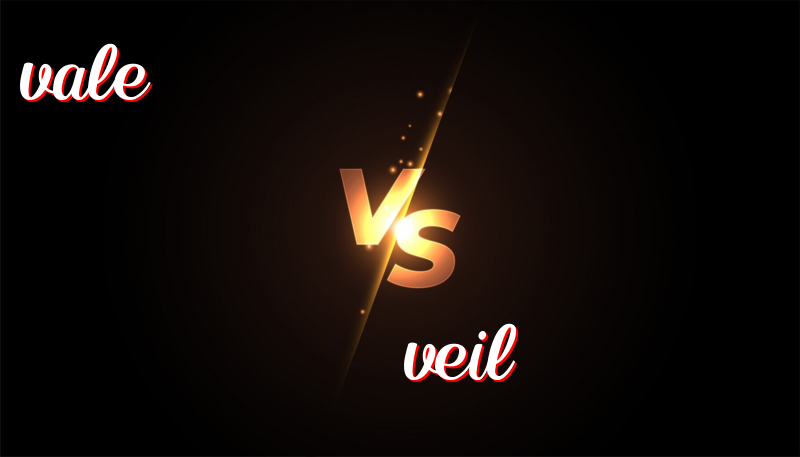Vale vs. Veil: Simple Differences Explained
Understanding the Difference: Vale vs. Veil
English words can sometimes sound alike but mean different things. Two such words are “vale” and “veil.” Let’s explore what these words mean, where they come from, and how to use them.
History of the Words
Vale: The word “vale” comes from old English and Latin. It means a valley or low area between hills, usually with nice views and greenery. People long ago liked to walk and live in these calm, quiet places.
Veil: “Veil” comes from old French and Latin. It is a piece of thin cloth that people wear to cover their face or head. Long ago, veils were used for many reasons, like showing respect or keeping beauty hidden.
Using the Words in Sentences
Vale:
- The hikers loved the view from the vale.
- She could see the small houses in the vale below.
- The river ran gently through the wide vale.
- Flowers and trees filled the peaceful vale.
- The travelers rested in the cool, shaded vale.
Veil:
- The bride wore a long, white veil on her wedding day.
- She lifted her veil to greet her friends with a smile.
- His sadness was hidden beneath a calm veil of happiness.
- The moon was covered by a thin veil of clouds.
- The actress wore a veil to hide from the cameras.
Trick to Remember the Difference
Think of “vale” with an “a” as in “valley.” Both are places with hills and nature. Remember “veil” with an “e” as in “eye,” which you might cover with a veil.
Summary
“Vale” is a pretty, green valley. Use it when talking about land between hills. “Veil” is a thin cloth that hides or covers someone’s face or head. Use it when discussing clothing or something hidden.
Now, you can use these words correctly and impress everyone with your knowledge!

Leave a Reply
You must be logged in to post a comment.